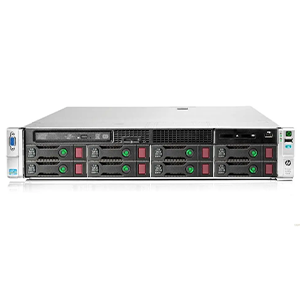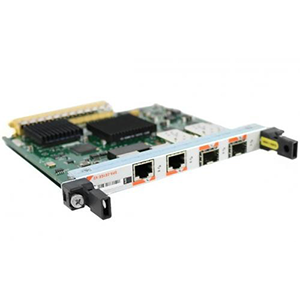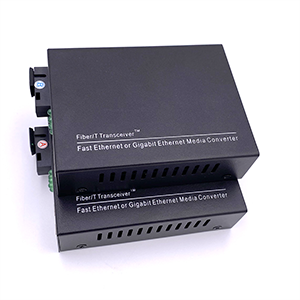Semiconductor optical amplifiers (SOA) and erbium-doped fiber amplifiers (EDFA) play an important role in optical communication systems. This article will explore the main differences between these two optical amplifiers. We will first define the basic structure and working principle of SOA and EDFA, and briefly introduce their characteristics and application scenarios.
We will deeply compare the main differences between SOA and EDFA in terms of gain mechanism, operating wavelength, noise characteristics, power consumption and integration, and reliability. We will explain how these differences affect the selection and performance of the two amplifiers in practical applications. Subsequently, we will analyze the applicability of SOA and EDFA for different application scenarios such as optical communication and optical switching, and provide selection recommendations and key considerations.
Overview of Semiconductor Optical Amplifier (SOA)
Let me introduce you to the basic concept of semiconductor optical amplifier (SOA):
Structure and working principle of SOA:
Semiconductor optical amplifier (SOA) is an optical amplifier that uses semiconductor materials as gain media. Its basic structure includes:
- Semiconductor chip: made of p-n structure semiconductor material, as gain medium
- Optical waveguide: used for transmission and coupling of optical signals
- Electrode: provides current pumping to achieve group inversion of semiconductor materials
- Optical isolator: prevents reverse feedback optical signal from interfering with the device
The working principle is to use the semiconductor exciton recombination process generated by electric pumping to amplify the input optical signal. By optimizing the device structure and materials, higher gain can be obtained.
Characteristics and application scenarios of SOA:
SOA mainly has the following characteristics:
- Small size and low power consumption: conducive to optoelectronic integration and chip-level applications
- High integration: can be integrated with other optoelectronic devices on the same chip
- Fast response: response time is in picoseconds, suitable for high-speed optical communication
- Wavelength flexibility: can work in a wide band
Based on these characteristics, SOA plays an important role in the following application scenarios:
- Optical switching and optical path selection: SOA can be used as an optical switch and optical gating device
- Fiber optic communication relay: SOA can be used as an optoelectronic relay to compensate for transmission loss
- Optical integrated circuit: SOA is an important component of optoelectronic integrated circuit
- Optical sensing: SOA’s high sensitivity is suitable for optical fiber sensing systems
In short, SOA, as a miniaturized and highly integrated optical amplifier device, is widely used in optical communication, optical switching, optical integration and other fields, and is an important support for the development of optoelectronic technology.
Overview of Erbium-Doped Fiber Amplifier (EDFA)
Let me give you a brief introduction to the relevant content of Erbium-Doped Fiber Amplifier (EDFA):
The basic structure and working principle of EDFA:
The main components of EDFA include:
- Erbium-Doped Fiber: As a gain medium, it is doped with trivalent erbium ions
- Optical Pump Source: Provides energy pumping to achieve erbium ion group inversion
- Optical Coupler: couples signal light and pump light into erbium-doped fiber
Working principle:
- Pump light excites erbium ions in erbium-doped fiber to excited state
- Input signal light and excited erbium ions undergo stimulated radiation
- Thus achieving amplification gain of input optical signal
Characteristics and application scenarios of EDFA:
EDFA mainly has the following characteristics:
- High gain: Gain can reach more than 40dB, meeting the needs of long-distance transmission
- Low noise: The noise factor is generally 3-6dB, suitable for high-sensitivity applications
- Broadband performance: Can cover C-band and L-band, suitable for DWDM system
- Easy to integrate: Small size, simple structure, conducive to optoelectronic integration
Based on these characteristics, EDFA is widely used in the following fields:
- Long-distance optical fiber communication: EDFA can effectively compensate for transmission link loss
- DWDM optical communication system: EDFA can realize the amplification of multi-wavelength channels
- Fiber optic sensing system: EDFA can amplify weak sensing optical signals
- Optical Internet: EDFA can amplify signals in optical switching networks
In short, EDFA, as an excellent fiber amplifier, has been widely used in fiber optic communication, optical sensing and other fields, and is an indispensable and important part of optoelectronic technology.
Main differences between SOA and EDFA
Let me compare the main differences between semiconductor optical amplifiers (SOA) and erbium-doped fiber amplifiers (EDFA) in detail:
Gain mechanism:
- SOA uses the exciton recombination process of semiconductor materials to achieve light amplification
- EDFA uses the stimulated emission process in erbium-doped fibers to amplify optical signals
- This leads to the gain characteristics of the two amplifiers There are obvious differences
Working wavelength:
- SOA can work in a wide wavelength range, from visible light to near infrared
- EDFA is mainly concentrated in the C band and L band around 1550nm
- This makes SOA suitable for a wider range of application scenarios
Noise characteristics:
- EDFA’s noise coefficient is generally low, between 3-6 dB
- The noise coefficient of SOA is relatively high, usually 6-8dB
- This makes EDFA more suitable for transmission applications requiring low noise
Power consumption and integration:
- SOA has a simple structure, low power consumption, and is easy to integrate into optoelectronic integrated circuits
- EDFA consists of optical fiber and pump source, and the overall structure is relatively complex
- This makes SOA more compact and integrated Advantages in applications
High reliability:
- EDFA does not require complex electronic circuits and has high reliability
- SOA’s reliability is subject to the characteristics of semiconductor materials
- Therefore, EDFA is more suitable for applications with strict reliability requirements
In short, SOA and EDFA, as two important optical amplifier devices, have their own characteristics and advantages and are suitable for different application scenarios. In practical applications, selection and trade-offs need to be made according to specific needs.
Choice of SOA and EDFA in different applications
Let me analyze the selection suggestions of SOA and EDFA in different application scenarios:
Optical fiber communication application:
- Application requirements: long distance, low noise, high gain
- Recommended selection: EDFA is more suitable, its high gain and low noise characteristics can meet the needs of long-distance optical fiber communication
- Considerations: EDFA has mature technology in the C/L band, while SOA has a wider wavelength range but poor gain stability</li >
DWDM system applications:
- Application requirements: broadband amplification, multi-wavelength integration
- Recommended choice: EDFA is more suitable, its broadband amplification characteristics can cover multiple wavelength channels of DWDM system
- Considerations: EDFA’s wavelength range can cover DWDM system, while SOA’s bandwidth is relatively narrow
Optical switching network applications:
- Application requirements: fast response, small integration
- Recommended choice: SO A is more suitable, its fast response and small integration characteristics are suitable for optical switching networks
- Considerations: SOA can be integrated into optoelectronic chips, while the overall structure of EDFA is relatively complex
Optical sensing system applications:
- Application requirements: high sensitivity, broadband response
- Recommended selection: SOA is more suitable, its high sensitivity and broadband performance are more conducive to optical fiber sensing
- Considerations: SOA’s noise level is slightly higher than EDFA, but the overall performance can still meet the needs of optical sensing
Optical Internet Network Applications:
- Application Requirements: Low Power Consumption, Miniaturization, Reliability
- Recommended Selection: SOA is more suitable, its low power consumption and miniaturization characteristics are conducive to the deployment of optical Internet networks
- Considerations: SOA’s reliability is slightly lower than EDFA, and needs to be further improved to meet network applications
In general, when choosing between SOA and EDFA, it is necessary to comprehensively consider the specific requirements of the application scenario, such as gain, noise, bandwidth, integration, reliability and other characteristics, so as to make the most suitable choice.
Summary
SOA and EDFA, as two important optical amplifier technologies, have their own advantages in meeting different application requirements. Our company has long been committed to the research and development and production of optical communication equipment and its core components, and has accumulated rich industry experience. We provide high-performance SOA and EDFA products.
Whether you are implementing high-speed optical communications, building large-capacity optical switching networks, or other scenarios that require optical amplification, we can provide you with the most suitable solutions. Our engineering team will provide you with professional selection guidance and provide comprehensive technical support for installation, commissioning, maintenance, etc. Contact us now to learn more.
SOA and EDFA FAQ
A Semiconductor Optical Amplifier (SOA) is an active optical amplifier that uses a semiconductor gain medium, typically a p-n junction, to amplify an input optical signal.
An Erbium-Doped Fiber Amplifier (EDFA) is an active optical amplifier that uses a length of erbium-doped optical fiber as the gain medium, powered by a pump laser.
SOAs use a semiconductor material as the gain medium, while EDFAs use a length of erbium-doped optical fiber as the gain medium.
SOAs amplify the input signal through stimulated emission in the semiconductor material, while EDFAs use the process of stimulated emission in the erbium-doped fiber.
SOAs can operate over a wide range of wavelengths, including the 1310nm and 1550nm telecommunications windows, while EDFAs are typically designed for operation in the 1550nm region.
SOAs generally have a higher noise figure compared to EDFAs, making EDFAs more suitable for applications requiring low-noise amplification.
EDFAs can typically handle higher optical input and output powers compared to SOAs, making them more suitable for high-power applications.
SOAs are generally more compact and can be more easily integrated with other photonic components, while EDFAs typically require more space and are often used as standalone modules.
SOAs are often used in optical switching, signal processing, and wavelength conversion applications, while EDFAs are widely used in long-haul and high-capacity fiber optic communication systems.
Ongoing advancements include the development of more efficient, higher-performance, and more compact versions of both SOAs and EDFAs to meet the evolving needs of fiber optic communications and photonic systems.




